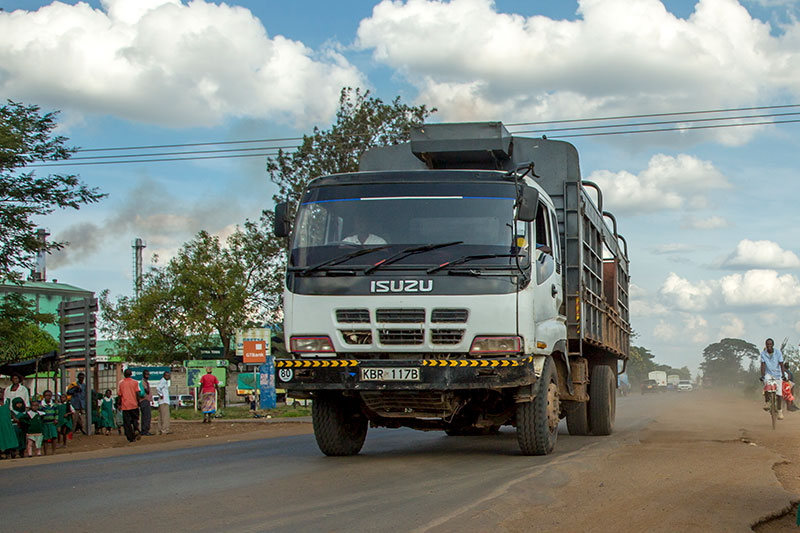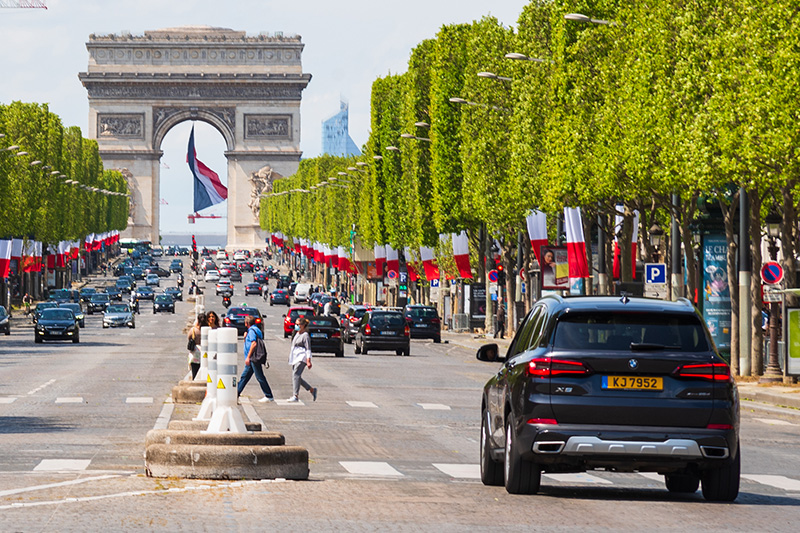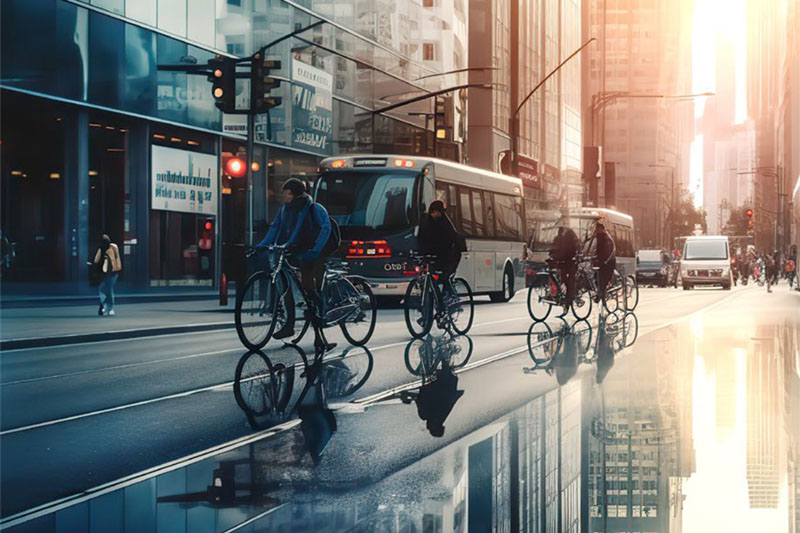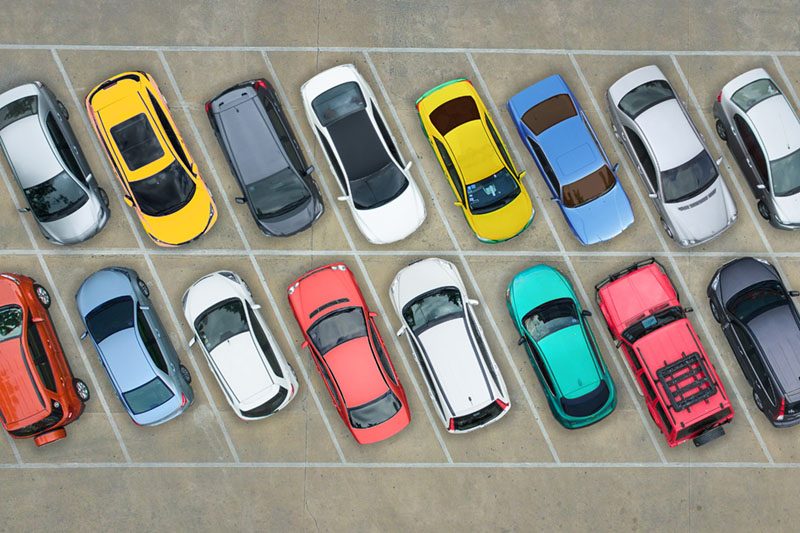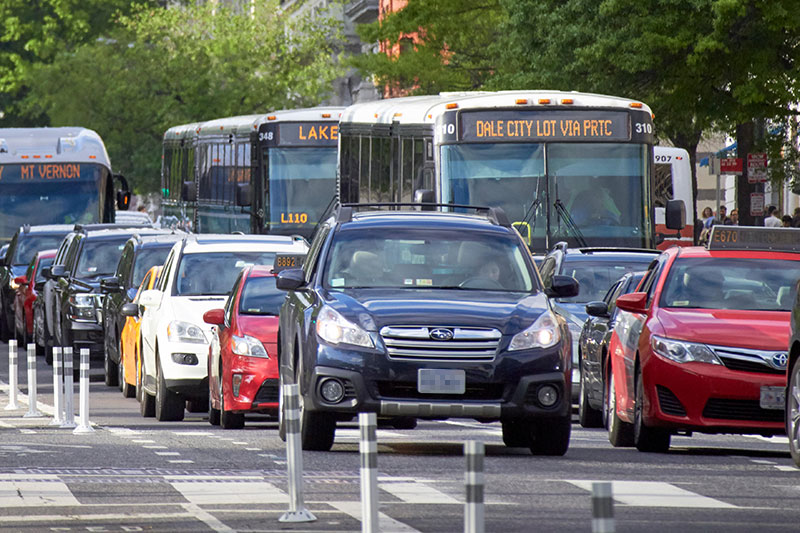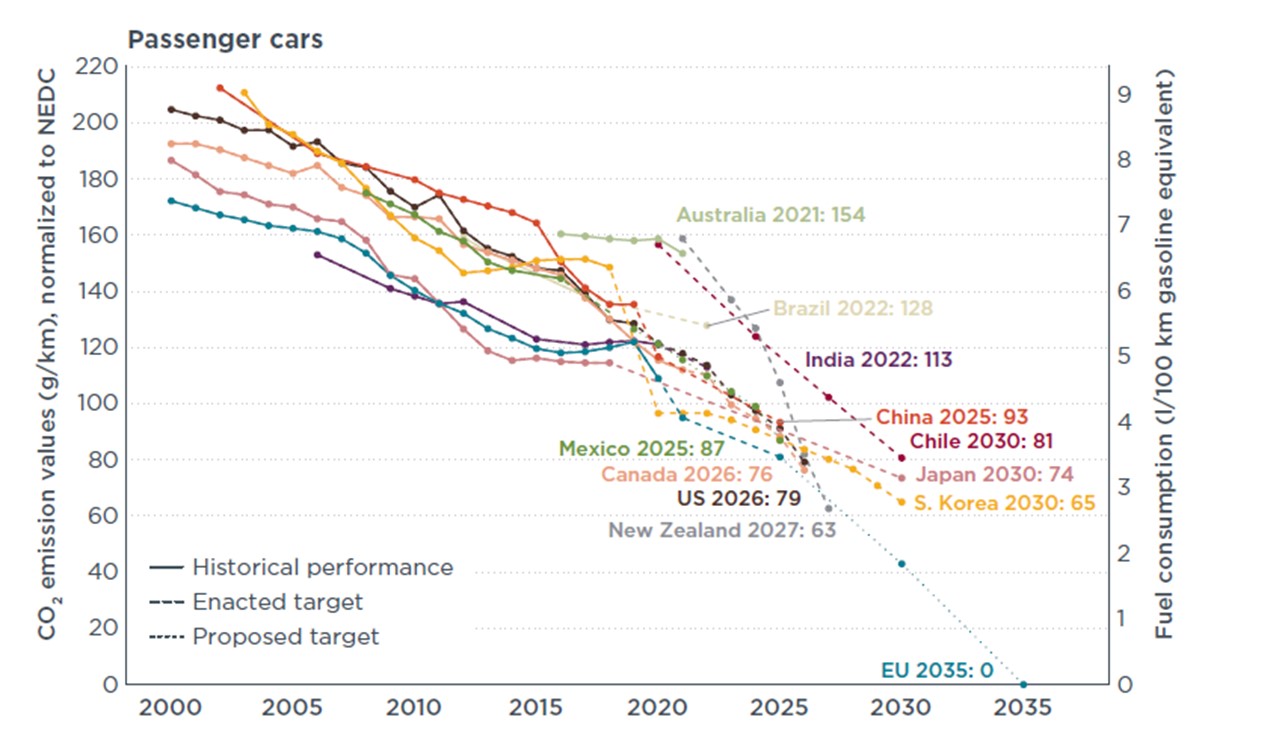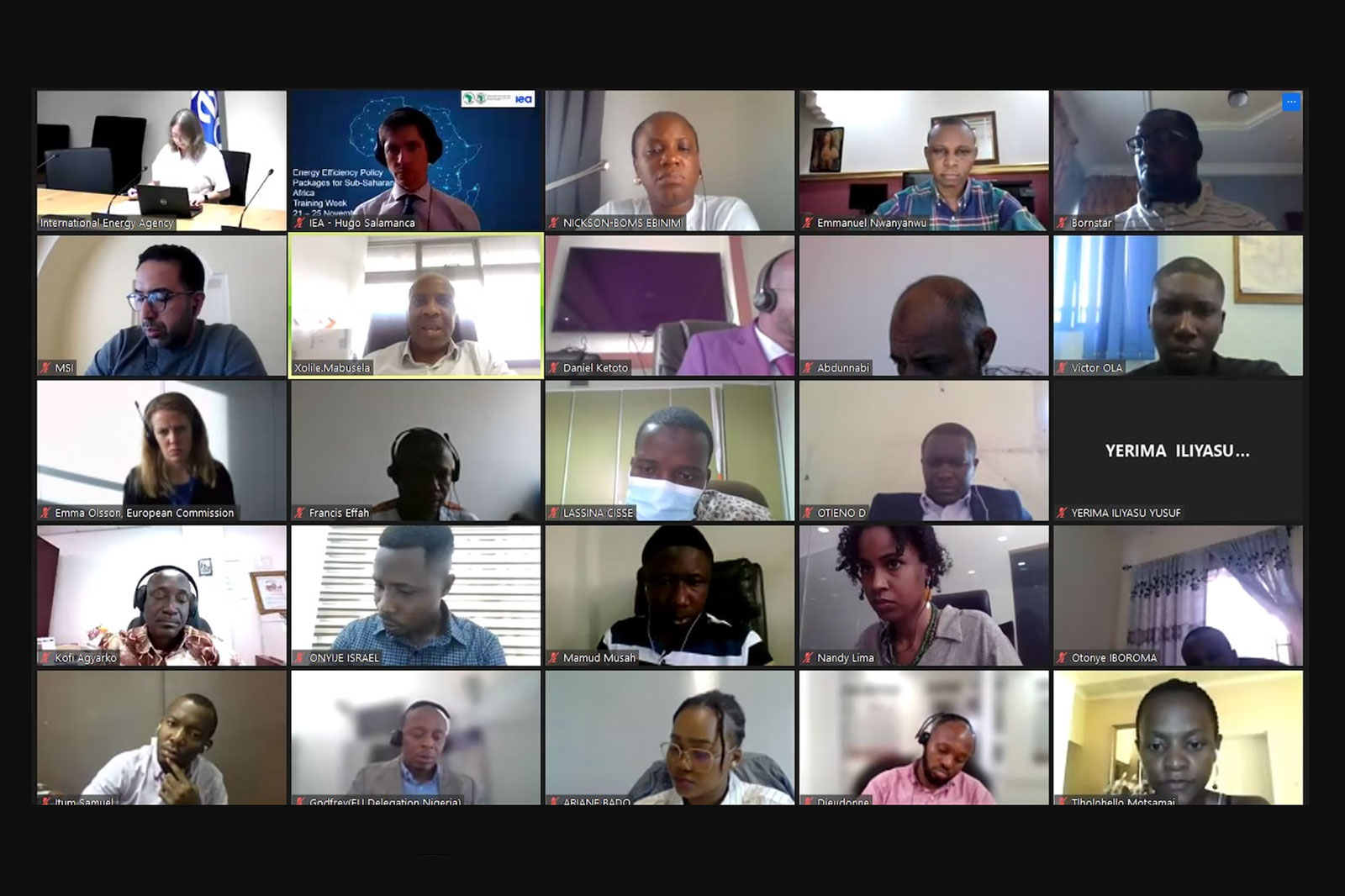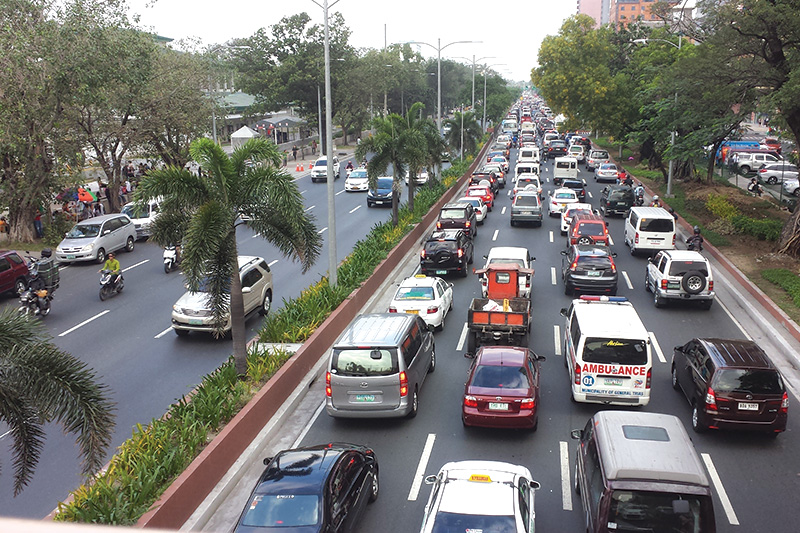Day 3: Launching State of the World – lights, camera, action!
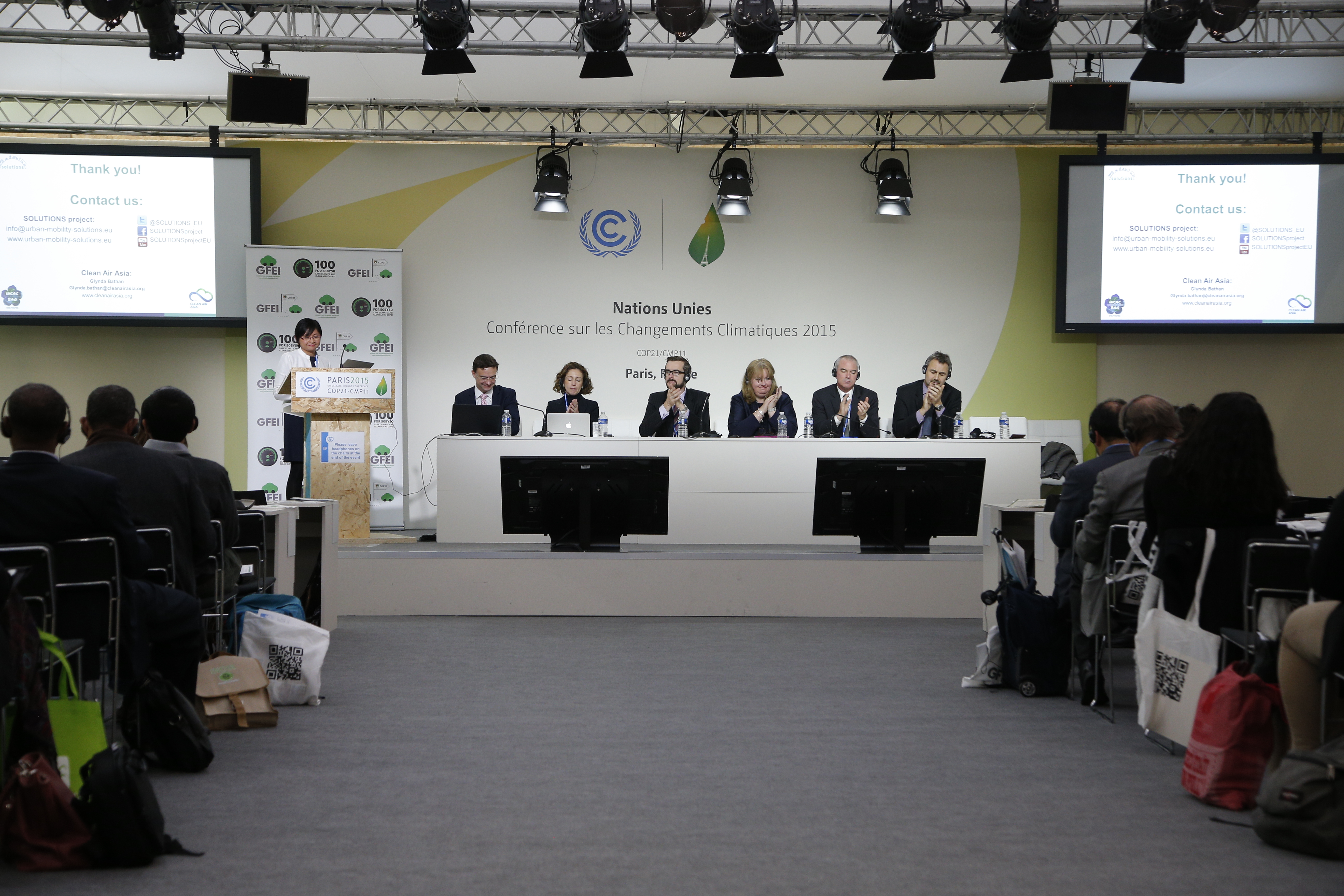
Although it runs contrary to everything I have ever been told about the COP, I am feeling more energetic as the days go by. It could be the great vibe which I am feeling at Le Bourget, or perhaps the amazing sunrise over the mini Eiffel Tower at the end of the ‘Champs Elysee’ which runs through the site?.In any case, after a couple of breakfast meetings (and a couple of cappuccinos), I was invigorated and ready to launch our latest research - ‘Fuel Economy State of the World 2016: Time for Global Action’.
Everyone who knows the COP is aware that individual bids for side events are never successful and bidders always have to group together in order to secure a slot. I think that the side event Gods were smiling on us when they led us with IPIECA, CAI Asia, the Wuppertal Institute, and CTS Mexico/Embarq as co-hosts of ‘Pathways to sustainable mobility’. Their contributions ranged across issues of extreme congestion, alternative energy scenarios and urban transport solutions, and could not have been more complementary, or more in tune with the ‘avoid, shift, improve’ paradigm of sustainable transport at COP21. They sparked a great Q and A session too – ably moderated by Holger Dalkmann from Embarq.
The GFEI report which I presented with Drew Kodjak of ICCT identifies just how significant regulations have been in pushing fuel economy improvements; how those regulations are getting tougher and having greater effect; but how much further there is to go before even the entirely achievable GFEI targets are met. GFEI will continue its programme of in-country capacity-building and sharing best practice in order to address this, but politicians and negotiators must also play their part.
That is why I wrote today to Christiana Figueres Executive Secretary of the UNFCCC, to emphasise the vital importance both of the climate agreement and wider policy sphere in promoting this most vital of issues. Improved fuel economy does not solve every problem – far from it. But it makes a vital contribution. We have the technology to achieve GFEI targets. Now we need the policy.
And then it was on to the UN-TV studios to promote the report and GFEI’s work to the wider community. Here’s hoping someone watches it!
